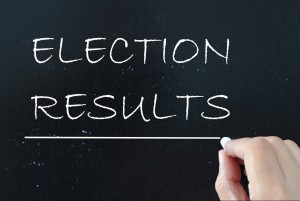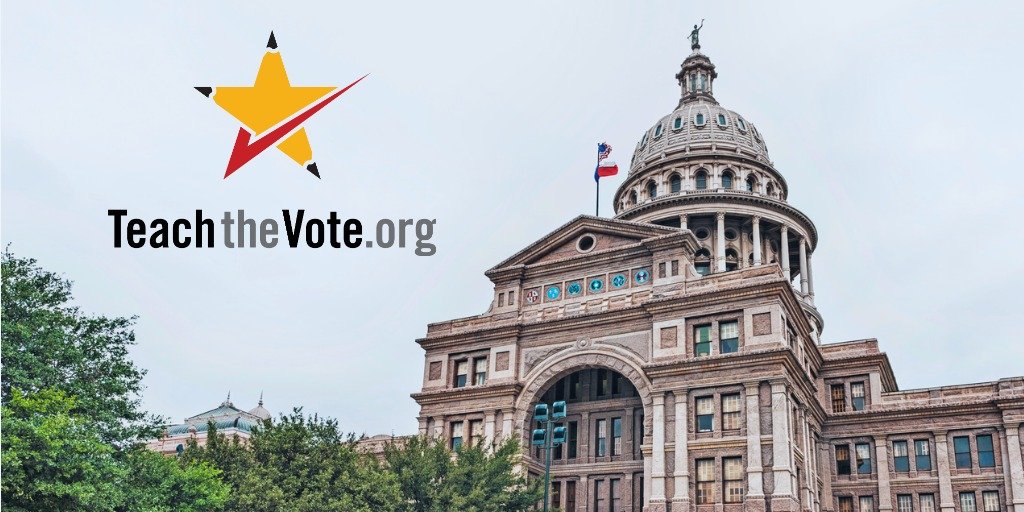Educators gain friendly statehouse seats in midterms

Texas Legislature Elections
Date Posted: 11/07/2018 | Author: Mark Wiggins
 After more than a year of voter mobilization efforts aimed at making an impact on the Texas Legislature, educators sprinted across the finish line Tuesday with plenty to be proud of.
After more than a year of voter mobilization efforts aimed at making an impact on the Texas Legislature, educators sprinted across the finish line Tuesday with plenty to be proud of.
Pro-public education candidates for the Texas House of Representatives, both Democrats and Republicans, had a great night. When the dust settled, 74 percent of candidates supported by ATPE-PAC won their races. Conversely, many candidates backed by the infamous group Empower Texans lost their races last night. Forty-two candidates endorsed by the pro-public education entity Texas Parent PAC were victorious, including these new representatives-elect:
- HD 4—Keith Bell, R-Forney
- HD 8—Cody Harris, R-Palestine
- HD 46—Sheryl Cole, D-Austin
- HD 47—Vikki Goodwin, D-Austin
- HD 52—James Talarico, D-Round Rock
- HD 62—Reggie Smith, R-Van Alstyne
- HD 105—Terry Meza, D-Irving
- HD 113—Rhetta Bowers, D-Garland
- HD 114—John Turner, D-Dallas
- HD 115—Julie Johnson, D-Addison
- HD 118—Leo Pacheco, D-San Antonio
- HD 121—Steve Allison, R-San Antonio
- HD 126—Sam Harless, R-Houston
- HD 136—John H Bucy III, D-Round Rock
Democrats gained 12 seats in the Texas House, which lowers the mathematical advantage for Republicans to 83-67 from the more lopsided 95-55. This shouldn't matter on most issues, but it could be extremely significant when it comes to dealing with highly partisan legislation such as vouchers or another anti-teacher payroll deduction bill, which the Republican Party of Texas has declared a top legislative priority despite resistance from within the Republican caucus. This new math could also influence the selection of a new House speaker to replace retiring pro-public education Speaker Joe Straus (R-San Antonio).
Over to the Texas Senate, the addition of two pro-public education members marks a slight improvement over the last legislative session. Beverly Powell defeated incumbent state Sen. Konni Burton (R-Colleyville) 52-48%, and Nathan Johnson defeated incumbent Sen. Don Huffines (R-Dallas) 54-46%. Their election helps offset the loss of a Democrat-held seat won by Republican state Senator-elect Pete Flores during a summer special election for Senate District 19.
The GOP majority in the Texas Senate now changes to 19-12 from 21-10, however Republicans will hold a 19-11 advantage for the majority of session due to U.S. Representative-elect Sylvia Garcia's (D-Houston) refusal to resign her state senate seat on time to hold a replacement election before the legislative session begins.
Under the Senate's 3/5 rule, 19 votes are needed to pass most major legislation, and just 18 votes will be needed until Garcia's seat is filled. This is very significant math in the Senate, where Lt. Gov. Dan Patrick (R-Texas) was able to push through multiple anti-public education bills, including voucher legislation, along largely party-line votes last session. However, there is reason to be optimistic that the results of this election cycle may embolden some pro-public education Republicans in the Senate to stand up to the lieutenant governor on these divisive issues.
Speaking of the lieutenant governor, Texas voters awarded him four more years Tuesday night. Despite his extremely anti-public education policies, Dan Patrick won reelection with a 51-46% victory over Democratic businessman Mike Collier. Patrick's support roughly tracked with his GOP colleagues on the statewide ballot. Patrick, U.S. Sen. Ted Cruz, and Texas Attorney General Ken Paxton each received about 4.2 million votes. Gov. Greg Abbott received the most votes at 4.6 million.
The results up and down the statewide ballot were fairly consistent despite vast differences in the amount spent in each race. Cruz's Democratic challenger, Congressman Beto O'Rourke, raised a staggering $70 million. His performance at the polls was largely mirrored by his statewide Democratic colleagues who raised a fraction of that amount. Democrats dominated the state's largest urban areas and were thereby able to flip several local seats, but their numbers were not sufficient to overcome rural Republicans' advantage in statewide races.
Now begins the process of dissecting the polling data to try and derive additional insights. At a general level, the Democratic strategy relied in part on mobilizing Democratic voters to achieve presidential election-level turnout while hoping Republicans turned out at typical midterm election levels. What happened instead was both Democrats and Republicans turned out at levels approaching a presidential election.
A total of 8.3 million Texas voters turned out for the 2018 midterm elections, compared to just 4.6 million voters for the 2014 midterms. Tuesday marked the highest turnout for a midterm election in Texas history, overall second only to the 2016 presidential election in which just shy of 9.0 million Texans voted. Looking deeper, about 400,000 fewer people voted for Cruz in 2018 than voted for Donald Trump in 2016. Conversely, O'Rourke received roughly 400,000 more votes than Hillary Clinton.
Registration of eligible voters increased to 79.40 percent in 2018 from 74.15 percent in 2014. This year's turnout of 52.70 percent marked a 59 percent increase in turnout from 33.70 percent who participated in 2014. Turnout for the 2016 presidential election was 59.39 percent. In raw numbers, turnout compared to the last midterm election was nearly double.
So what does this all mean? It means that overall, educators did a great job electing local candidates who will stand up for public education. Through your hard work, you've made a positive difference on the political math within the Texas Legislature. Notwithstanding this success, arguably the largest challenge facing educators will be the retention of statewide leaders who have not taken the most education-friendly stances in the past. Will close calls during this election and the increase in voter turnout and enthusiasm among the education community this year provide an incentive for state leaders to become more responsive to and accountable for the needs of public schools? With the elections over, the battle now moves from the ballot box to the statehouse. Educators will need to harness the same enthusiasm to help make the 2019 legislative session a success for our students and classrooms.
CONVERSATION
RECOMMENDED FOR YOU

Elections, Miscellaneous, TEA | Commissioner | SBOE, Testing | Accountability, Texas Legislature
06/21/2024
Teach the Vote’s Week in Review: June 21, 2024
STAAR scores continue to generate buzz. Plus, watch this video on upcoming House of Delegates consideration of the ATPE Legislative Program.

12/19/2025
Teach the Vote’s Week in Review: Dec. 19, 2025
Happy Holidays from ATPE! The ACLU of Texas is challenging SB 12 in federal court, and ATPE has distributed candidate surveys to those running for statewide, legislative, and SBOE seats.

12/18/2025
Gov. Abbott’s property tax promise and the split in the Texas GOP
Property taxes aren’t just a political talking point. They’re the main revenue source for vital local services, including police, fire, and public education.

